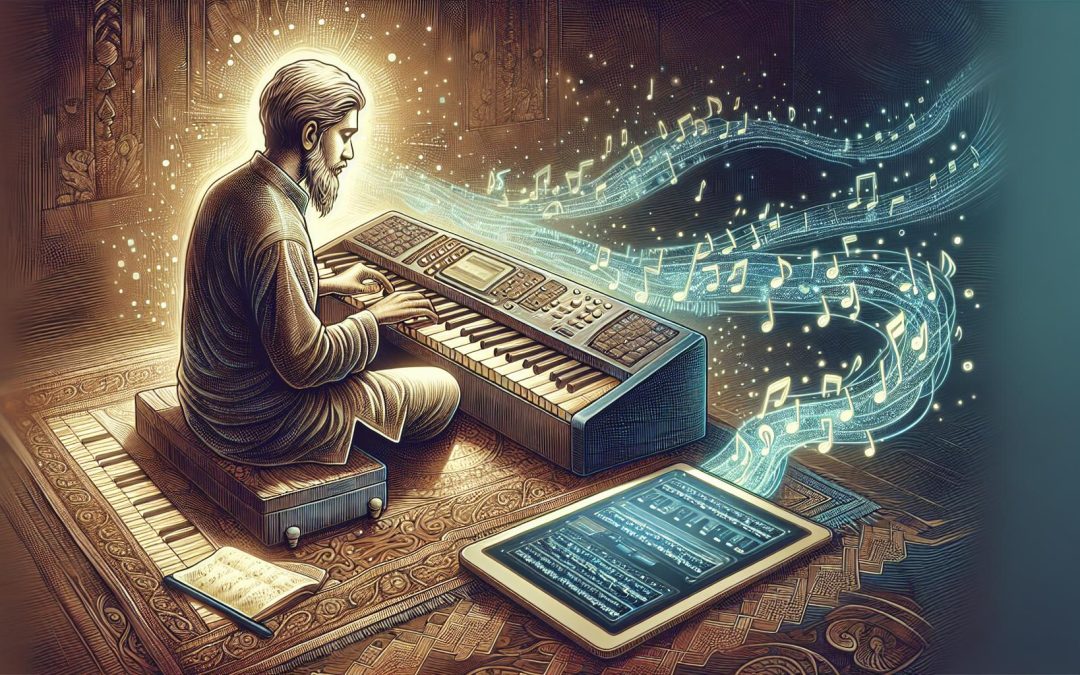Starting your musical journey can be as exciting as it is daunting, especially when you're in the market for your first keyboard. With so many options out there, it's easy to feel overwhelmed. But fear not! For beginners, the key to unlocking your potential could very well lie in finding the perfect keyboard paired with stellar learning software.
In today's digital age, a beginner's keyboard isn't just about the keys and sounds. The integration of learning software has revolutionized how novices learn and interact with music. They offer interactive lessons, real-time feedback, and a plethora of songs to practice, making the learning curve less steep and a lot more fun. Let's dive into the world of the best beginner keyboards with learning software, designed to make your musical journey as smooth and enjoyable as possible.
Understanding the Importance of Learning Software
In today's digital age, the way people learn musical instruments has undergone a significant transformation. Traditional methods of learning, while still valuable, are now complemented with technological innovations such as learning software. This integration is particularly beneficial for beginners who are embarking on their musical journey with a keyboard.
Learning software comes with a host of advantages that make it an indispensable tool for novices. First and foremost, it offers interactive lessons that are both engaging and instructive. Instead of merely reading from a book or listening to instructions, learners can interact with the software, making the learning process more dynamic and effective.
Another critical benefit is real-time feedback. This feature allows learners to identify and correct their mistakes immediately, fostering a quicker and more accurate learning process. Such instant feedback is hard to come by in traditional learning setups, especially for those practicing alone without a teacher present.
Moreover, learning software usually includes a vast library of songs and exercises covering various genres and difficulty levels. This diversity not only keeps the practice sessions fresh and exciting but also allows learners to explore different musical styles. Finding a favorite song in the mix can be a significant motivational boost.
The flexibility of learning software is another key factor in its importance. Learners can practice at their own pace, at any time of the day, without the need to align with a teacher's schedule. This makes it easier to incorporate practice into a busy routine, ensuring consistent progress.
Here are a few key points summarizing the importance of learning software for beginner keyboard players:
- Interactive lessons enhance engagement and learning effectiveness.
- Real-time feedback accelerates learning progress by immediate mistake identification.
- A variety of songs and exercises enrich the learning experience and offer a wide musical exploration.
- Unparalleled flexibility in practice times helps in maintaining consistent learning progress.
It's clear that pairing a beginner keyboard with learning software not only makes the learning process smoother but also more enjoyable. In the upcoming sections, we'll explore some of the best beginner keyboards that come with or are compatible with learning software, ensuring novices have the tools they need to kickstart their musical journey on the right note.
Factors to Consider When Choosing a Beginner Keyboard

When it comes to making music, the right tools are paramount, especially for beginners. Choosing a beginner keyboard is more than just picking out the most appealing option. There are crucial factors one should weigh to ensure their musical journey is both enjoyable and productive.
Key Size and Number
Beginner musicians should look for keyboards with full-size keys to ease the transition to other piano types in the future. Most traditional pianos have 88 keys, but beginners can start with a lesser number without compromising too much on the range. A keyboard with 61 keys is often ample for learners to get acquainted with the basics.
Touch Sensitivity
The touch sensitivity of a keyboard can greatly affect a player's ability to express themselves musically. This feature allows the volume of the note to change with the pressure applied to the keys. For beginners, learning on a touch-sensitive keyboard can be instrumental in developing a nuanced playing style from the start.
Learning Software Compatibility
In the digital age, the compatibility of a keyboard with learning software is a game-changer. Learning software can offer lessons, exercises, and games that make practice more engaging. Before making a purchase, check if the keyboard is compatible with popular learning software. This ensures that beginners can take full advantage of digital lessons to fast-track their progress.
Sound Quality
While it's understood that beginners might not demand concert-quality sound, the sound quality of a beginner keyboard should still be decent enough to be enjoyable. Poor sound quality can be discouraging and hinder a learner's ability to discern their progress. Aim for keyboards that offer a rich and authentic sound that makes practice sessions rewarding.
Portability and Connectivity
For beginners, especially younger ones or those constantly on the move, a portable keyboard can be very practical. Some keyboards are designed to be lightweight and compact, making them easy to transport from one place to another. Additionally, connectivity options like USB and MIDI can open up a world of possibilities, allowing the keyboard to interact with various devices and software.
Price
Budget is always a consideration, particularly for those just embarking on their musical journey. Fortunately, the market offers a wide range of keyboards suited to all budgets. It's key to find a balance between quality and affordability. Investing in a moderately priced keyboard with the essential features mentioned above can provide a solid foundation without breaking the bank.
Top Beginner Keyboards with Built-in Learning Software

In the vast world of musical instruments, finding the perfect beginner keyboard that comes equipped with learning software can be a game-changer for those embarking on their musical journey. These keyboards don't just offer the standard features necessary for learning but also include interactive lessons, tutorials, and exercises integrated directly into the device, making learning both accessible and engaging.
The Yamaha EZ-220
The Yamaha EZ-220 stands out for its beginner-friendly features, including 61 touch-sensitive, lighted keys which guide beginners through the learning process. One of the standout features of the EZ-220 is its compatibility with the Yamaha Education Suite (YES), an app that offers interactive lessons and tracking features to monitor progress. Additionally, it boasts 392 high-quality instrument voices and 100 preset songs, providing a rich repertoire for practice. Its wireless connectivity to the Page Turner app for iPad also means that sheet music and digital scores are literally at the student's fingertips.
The Casio LK-S250
Casio's LK-S250 is another exceptional choice for beginners, known for its 61 touch-responsive keys with a key lighting system. What makes it especially conducive for learning is the integrated Step-Up Lesson System, which breaks down songs into smaller, manageable learning chunks. Furthermore, it's remarkably portable thanks to its lightweight design and battery-operated option, making it convenient for musicians on the go. The LK-S250 also offers USB connectivity for easy integration with external learning apps and software, amplifying its teaching capabilities.
The Roland GO:KEYS
For those seeking innovation alongside quality, the Roland GO:KEYS keyboard is a versatile option. It doesn't follow the traditional lighted keys approach but differentiates itself with its performance pads that let users trigger looped phrases and backing tracks, encouraging improvisation and exploration. It’s equipped with Bluetooth MIDI technology, allowing it to connect seamlessly with popular music education apps for both iOS and Android devices. The GO:KEYS feature set includes over 500 pro-quality sounds, giving students a vast sonic palette to experiment with. This keyboard encourages a hands-on learning approach, which is appreciated by learners who thrive on creativity and experimentation.
Comparison of Learning Features Among Different Keyboard Brands

When venturing into the world of music production or learning a new instrument, selecting the right keyboard is crucial. Today's market is filled with various brands offering keyboards designed for beginners, each with its unique learning software and features. This section dives deep into the comparison of learning features among different keyboard brands, focusing on how they cater to novice musicians.
Yamaha Keyboards: The Integration of Technology and Education
Yamaha has always been at the forefront of music education technology, and its keyboards are no exception. The Yamaha EZ-220, for example, is equipped with lighted keys and a comprehensive learning system known as the Yamaha Education Suite (YES). YES offers nine-step lessons that range from watching the lesson, trying it out, and then finally performing the piece. This methodical approach ensures users not only learn songs but also understand the nuances of music theory and timing. The integration of the Page Turner app for iPad adds an interactive dimension, turning sheet music into a digital format and allowing for a more engaging learning experience.
| Feature | Yamaha EZ-220 | Casio LK-S250 | Roland GO:KEYS |
|---|---|---|---|
| Key Lighting | Yes | Yes | No |
| Learning App | Yamaha Education Suite | Casio Chordana Play | Roland Partner 2 |
| Portability | Moderate | High | Moderate |
| MIDI Support | USB to Host | USB to Host | Bluetooth MIDI |
| Interactive Lessons | Yes | Yes | Limited |
Casio Keyboards: Portability Meets Lesson Versatility
Casio's approach to learning keyboards, such as the Casio LK-S250, revolves around portability and versatility. With its Step-Up Lesson System, users can learn built-in songs in phases at their own pace. The LK-S250 also emphasizes chord learning, a fundamental skill for keyboard players. The integration with the Casio Chordana Play app extends learning capabilities by offering downloadable songs and allowing users to play along with their favorite tunes, making the process both educational and fun. In addition to education, the LK-S250 makes portability a breeze with its lightweight design, making it an excellent choice for learners on the move.
Tips for Maximizing Your Learning Experience

Embarking on the journey of learning keyboard can be exhilarating. However, it's not just about having the right equipment but also about how you use it. Here are practical tips to help maximize your learning experience, ensuring you get the most out of your beginner keyboard with learning software.
Set Clear Goals: They say if you aim for nothing, you'll hit it every time. Setting clear, achievable goals will guide your practice sessions and keep you motivated. Whether it's mastering a particular song or learning a new chord each week, goals provide direction.
Regular Practice: Consistency is key in learning any new skill. Even just 15 minutes of focused practice each day can yield significant improvements over time. The Yamaha Education Suite and Casio's Step-Up Lesson System are designed for bite-sized, daily learning, so take advantage of these features.
Use the Learning Tools Provided: Beginner keyboards come packed with features specifically designed to aid in learning. Yamaha's lighted keys and Casio's Chordana Play app are excellent examples of this. Engage with these tools regularly to reinforce music theory and practice in an interactive way.
- Yamaha EZ-220's lighted keys visually guide you through songs.
- Casio LK-S250 offers touch-sensitive keys that respond to your playing style, ideal for expressing nuances as you play.
Record and Listen: Many keyboards have built-in recording functions. Use this feature to record your practice sessions. Listening back can help identify areas for improvement and track your progress. It also allows you to hear your playing from a different perspective.
Learn to Read Music: While learning to play by ear is an invaluable skill, being able to read music opens up a vast world of literature for piano and keyboard. Start with simple pieces and gradually increase the difficulty as you become more comfortable.
Play Along with Songs: Playing along with songs can make practice fun and rewarding. It helps with timing, rhythm, and brings a sense of accomplishment. Look for keyboards that allow you to connect an external device or access an online library of songs.
Seek Feedback: Don't underestimate the value of feedback. Whether from a teacher, a friend, or online communities, constructive feedback can pave the way for significant improvements. Online forums and social media groups can be great resources.
Conclusion
Choosing the right beginner keyboard with learning software is a significant first step in the musical journey. By following the tips outlined, learners can truly make the most of their practice sessions. Whether it's leveraging Yamaha's innovative lighted keys or diving into the interactive world of Casio's Chordana Play app, there's no shortage of resources to support budding musicians. Remember, the key to mastery is patience, persistence, and a passion for music. So grab that keyboard, embrace the learning curve, and let the melodies flow.
Harlan Kilstein began playing piano during covid with no piano background at all. He taught himself how to play learning what to do and what not to do.
Today he's an advanced intermediate player and can help you grow in your skills because he learned all this on his own.








